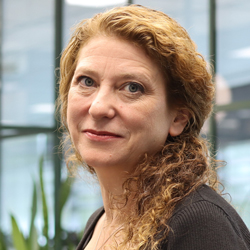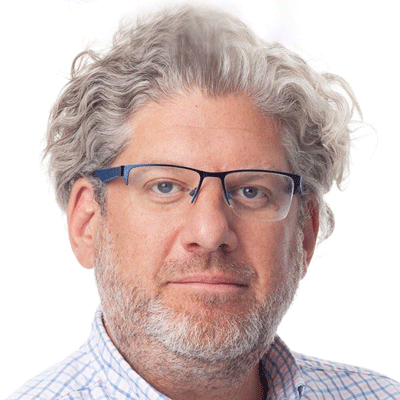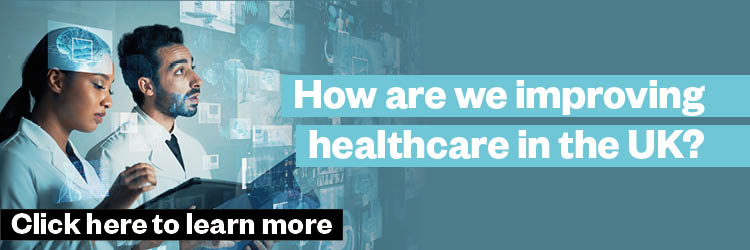
Fleur Chandler
Head of Market Access UK and Ireland, Sanofi

Ben Whitehouse
Head of Rare Diseases UK and Ireland, Sanofi
To work in the rare disease space, pharma companies need to show commitment, flexibility and ingenuity, collaborate well and have a patient-centred focus.
Fleur Chandler, Head of Market Access UK and Ireland at global healthcare company Sanofi, knows how vital it is to improve diagnosis times and treatment outcomes in rare diseases. Thirteen years ago, her son — now aged 16 — was diagnosed with Duchenne muscular dystrophy (DMD), a rare and fatal progressive disease.
Commitments to rare diseases
“My professional and personal lives overlap,” says Fleur. “I remember trying to get a diagnosis for my son, but rare diseases diagnosis — 75% of which start in childhood1 — can take five years on average.2 Because of my background, I suspected DMD before it was diagnosed, but many people aren’t in that position. As a parent, I’m aware that waiting can be extremely draining because you know that something is wrong.”
Fleur welcomes the Government’s UK Rare Diseases Framework,3 published last year, which outlines four key commitments: quicker final diagnosis; increased awareness of rare diseases among healthcare professionals; better coordination of care; and improved access to specialist care, treatments and drugs.
AI and big data in diagnosis
These commitments align with the healthcare company’s rare diseases priorities. “We’re now focused on the tangible things that need to happen to make those commitments a reality,” says Ben Whitehouse, Head of Rare Diseases UK and Ireland at Sanofi. “For example, we believe AI, big data and machine learning are a key part of the future for rare diseases and can be used to reduce diagnosis times. We’re currently running a number of pilots using this technology and see an opportunity for algorithms to identify patients who are undiagnosed or misdiagnosed. ”
However, they know they can’t make these advances on their own. “That’s why we’re collaborating with several partners, including those who have expertise in the data space,” says Ben. “These partnerships also involve working closely with the NHS to ensure the best outcomes for patients.”
We’ve kept going because we know how important it is for patients and their families.
Ben Whitehouse
Proving treatments work
When it comes to developing new treatments, this is a field facing particular challenges. By their very nature, rare diseases don’t affect many people, which makes clinical trials difficult. But thanks to patients’ engagement, such trials are possible.
Ben admits that developing rare disease treatments can take years, which is why pharma companies like Sanofi must show commitment, ingenuity and flexibility. “For example, we’ve been investigating acid sphingomyelinase deficiency (ASMD), a rare, progressive and potentially life-threatening disease, for two decades,” says Ben.
“We’ve kept going because we know how important it is for patients and their families.” Ben notes that they are particularly proficient at setting up registries to generate patient data. They demonstrate to funding agencies the difference that a particular treatment can make to those with a rare disease.
“We know, collaboration across patient organisations, industry, academia, decision-makers and clinicians is the key,” says Fleur. “That’s why we are in the process of setting up such groups, looking at evidence which is vital, such as quality of life in carers of those with rare life limiting diseases.”
Pushing through challenges
Earlier this year, Ben took part in a choir event sponsored by Sanofi, called Pompe and Circumstance to raise awareness of Pompe disease, which can cause muscle weakness and breathing problems. Patients, patient advocacy groups, industry, physicians and nurses all gathered to record a song to coincide with International Pompe Day.
“It was genuinely the most moving day I’ve experienced in my 20 years in pharma,” says Ben. “Everyone was working together, even though many of us were out of our comfort zones. It shows what collaboration can achieve. That’s why I’m optimistic.”
“Pharma has a duty to all diseases,” says Fleur. “We want to enable rare disease patients and their families to be able to access innovative treatments and live as full a life as possible, and to experience joy wherever they can find it.”
Document No: MAT-XU-2204000 (V1.0)
Date of Prep: September 2022
[1,2] The long journey to a rare disease diagnosis.
Available from: https://ec.europa.eu/research-and-innovation/en/horizon-magazine/long-journey-rare-disease-diagnosis
[3] The UK Rare Diseases Framework. Available from: https://www.gov.uk/government/publications/uk-rare-diseases-framework




